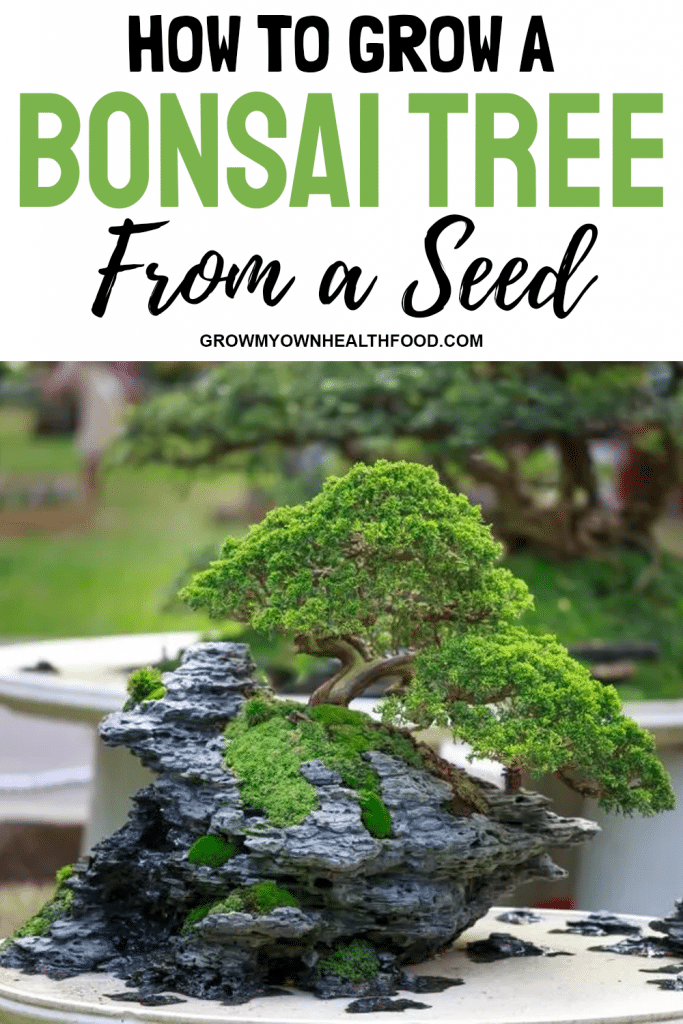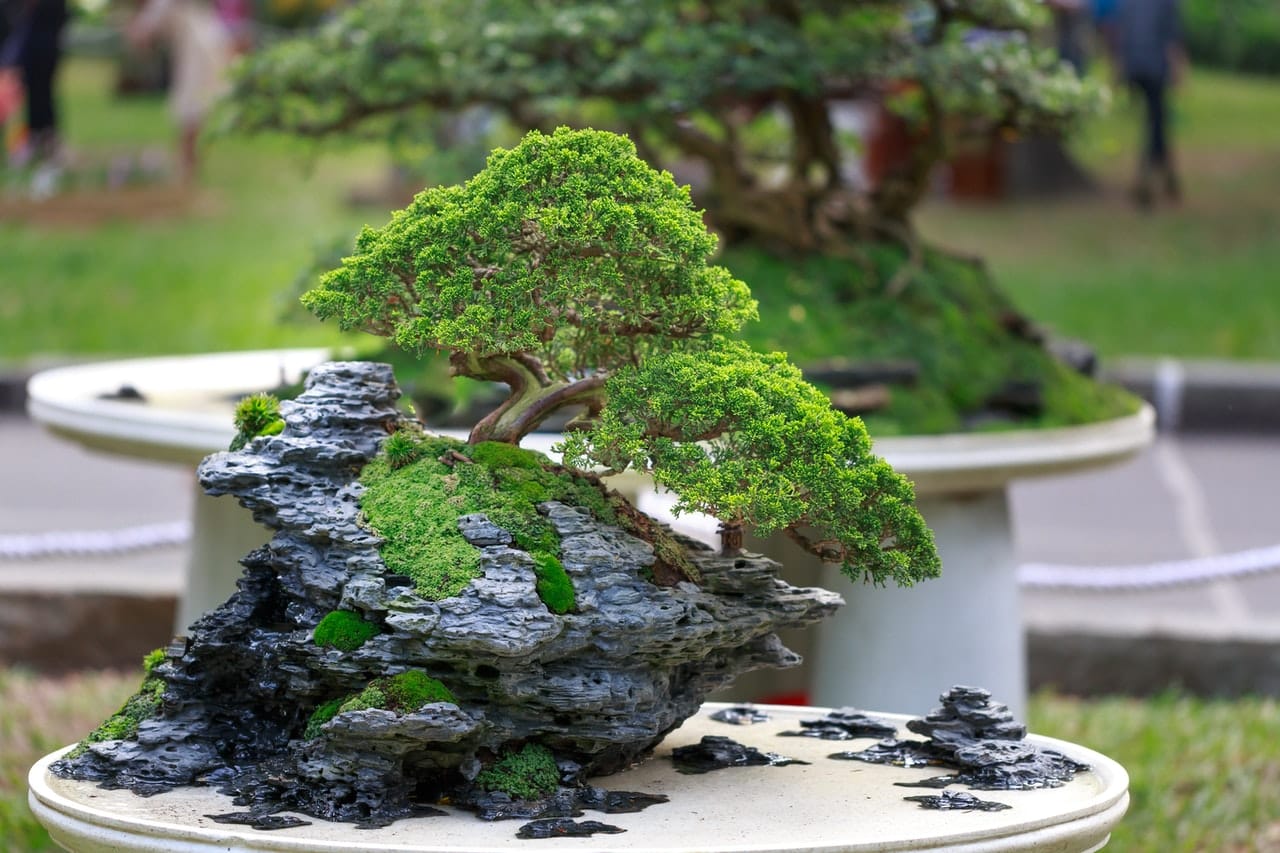I know this a little out of the “Health Food” spectrum, However growing a Bonsai tree can certainly help mental health. The title of this article may seem misleading to some. There is no magical seed called “bonsai seeds” that grow tiny trees. (Just about) any tree can become a bonsai, though. To understand this, it’s important to know exactly what bonsai is and how to achieve it.
What is a Bonsai Tree?
Bonsai (pronounced bon-sigh or baan-sai) is the ancient Japanese art of growing small trees in pots. The goal is to make the trees appear as miniature replicas of full-sized trees, in both shape and proportion. Bonsai came from the even older ancient Chinese art of penjing, also called penzai, which is also growing small trees in pots. There are subtle differences between penjing and bonsai, so subtle that most beginners wouldn’t even notice.
Types of Bonsai Trees
Pretty much any tree can be used for a bonsai. Both deciduous and coniferous trees are used, as well as tropical and temperate trees. Some trees can be kept indoors year-round, while others must be kept outdoors.
The best trees for bonsai are ones with small, simple leaves. Some trees allow leaf size to be reduced through pruning, which helps to keep the small tree in proper proportion.
Buy or Grow a Bonsai Tree?
Most people begin their bonsai experience by buying an already mature bonsai tree. There are several advantages to this. A mature bonsai tree has already had its style and shape determined by an experienced bonsai trainer, so it doesn’t require much skill or experience to keep its shape. Just prune the wayward leaves every year or so.
- SPECIES: Delicate white blossom bloom almost year round and small dark green leaves are shiny with little white dots on the surfaces which are often mistaken for insect infestations.
- AGE/SIZE/CARE: Your medium 6 year old bonsai will arrive at 6 to 10 tall in a 8 container and will perform best indoors (see detailed care instructions in images)
- BLOOM: Bonsai will bloom between April - May
Prices pulled from the Amazon Product Advertising API on:
Product prices and availability are accurate as of the date/time indicated and are subject to change. Any price and availability information displayed on [relevant Amazon Site(s), as applicable] at the time of purchase will apply to the purchase of this product.
You can also buy what’s called “pre-bonsai” trees. These are mature trees that have been kept small, but not shaped and styled in a traditional bonsai style yet. If you want to practice your pruning or wiring skills, a pre-bonsai tree might be right for you.
- The naturally twisted stems and fernlike foliage make this Ming a true Asian treasure
- Correct Name: Polyscias fruticosa Elegans. Also know as Parsley Aralia
- Display this plant in bright light but protect from the hot sun
- Makes a great house plant or bonsai!
Prices pulled from the Amazon Product Advertising API on:
Product prices and availability are accurate as of the date/time indicated and are subject to change. Any price and availability information displayed on [relevant Amazon Site(s), as applicable] at the time of purchase will apply to the purchase of this product.
Bonsai Tree Starter Kit
One other popular option is the Bonsai Starter Kit. This has everything you need to start from a seed, which is what we’ll be spending the rest of the article discussing
- Contains 4 types of seeds (Rocky Mountain Bristlecone Pine, Black Poui, Norway Spruce, and Flame Tree) stored in seed-safe vials for better germination, 4 biodegradable growing pots, 1 expanding-soil disc, 4 bamboo plant markers, 1 bonsai clipper and a beautiful, comprehensive and simple instruction booklet.
- #1 growth performance: Our rating speaks for itself! Planters Choice is the only brand that stores the seeds in our seed-safe vials to ensure proper germination.
- The perfect diy gift: For mom, dad, him or her, this is the perfect gift to give on birthdays, anniversaries, holidays, housewarming, or any other occasion.
Prices pulled from the Amazon Product Advertising API on:
Product prices and availability are accurate as of the date/time indicated and are subject to change. Any price and availability information displayed on [relevant Amazon Site(s), as applicable] at the time of purchase will apply to the purchase of this product.
For those who like a challenge, growing bonsai trees from seeds can be a rewarding hobby. Seeds are extremely affordable when compared to the cost of some mature bonsai trees. You can get a packet of seeds for usually just a few dollars. The real challenge is having the patience to grow a tree from a seed.
How Long Do Bonsai Trees Take to Grow?
A Bonsai tree can grow for hundreds of years. For the first few years, you won’t need to prune or wire your tree, because it will only be a seedling. Still, if you have the patience, growing a bonsai tree from seed can be an incredibly rewarding experience. If you’d like to give it a go, here is how to get started.
How to Grow a Bonsai Tree From a Seed:
Choose Your Bonsai Tree Species
I personally love growing trees from seeds. I collect seeds from maples, oaks, and cypress trees in my neighborhood and sow them in the fall. There is always a little thrill when you see the first green start to poke through the soil in the spring.
Since seeds are so inexpensive, I recommend trying several different species of trees each growing season. I like growing tropicals from seeds because you can just throw the seeds in some soil and stick them outside in the spring. For most temperate trees such as maples and oaks, the seeds need cold stratification before they can germinate. That means they need to be exposed to freezing temperatures for 2-3 months to simulate winter.
Can Any Tree Be a Bonsai Tree?
For a beginner growing their first trees from seeds, I recommend either ficus or Chinese Elm. They are both easy to germinate and extremely forgiving of mistakes such as under or overwatering. There are several species of ficus that are excellent for bonsai. F. benjamina, F. microcarpa, F. benghalensis, and F. religiosa are some of the more readily available seeds.
Sowing Your Bonsai Tree Seeds
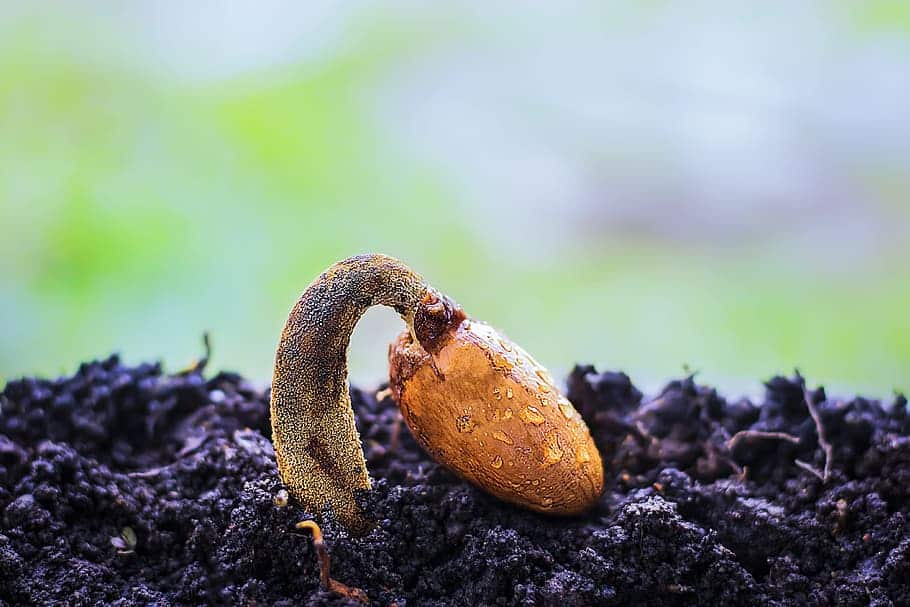
To sow your seeds, you can purchase seed starter mix from the garden center in most hardware stores or from your local nursery. Seed starter mix is slightly different from regular potting soil. It has a fine, light texture which allows the seeds to germinate properly. If you only have potting soil available, that will work too.
Next, you need a container. Trees with large seeds such as oaks and maples can be grown in their own small pots, with one seed in each pot. Ficus and elm seeds are very small. Each seed is about 1/64th the size of a grain of rice. For small seeds, you will want a seed tray.
A seed tray is a wide, flat, shallow tray used to sow many seeds at one time. Fill the tray with seed starter mix and sprinkle your seeds evenly across the surface. Then, add a thin layer of seed starter mix on top, just barely enough to cover the seeds. Apply enough water to soak the mix thoroughly, but not so much that water begins to pool.
If it’s spring or summer, you can place your seed tray outside, as long as the nighttime low temperature doesn’t reach below 40 degrees Fahrenheit. If it’s fall or winter, or you just want to give your seeds the best possible odds at germination, you should keep them indoors and place them on a heating mat. The heating mat applies warmth directly to the seed tray to encourage germination.
Bonsai Tree Germination
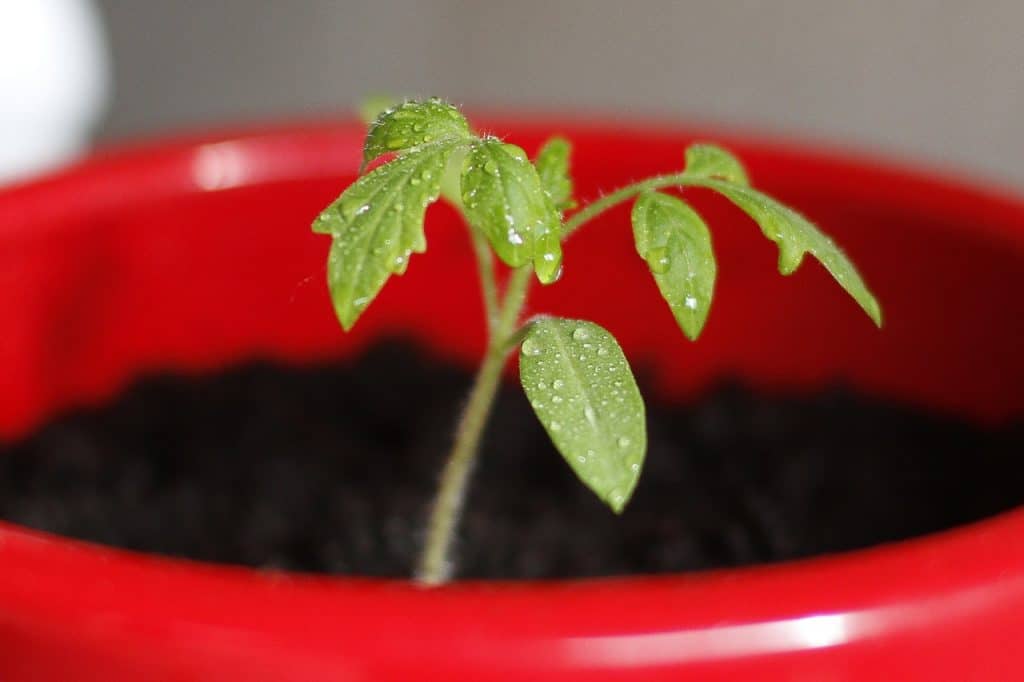
The time it takes seeds to germinate can vary greatly from species to species, and vary based on different growing conditions. Ficus can be notoriously slow to germinate, sometimes taking months to sprout even in ideal conditions. They also have relatively low germination rates, the percentage of seeds that germinate. But because they are so small and usually sold in packages of 100 seeds, you will still likely get many, many seedlings to grow.
Once you see the first green sprouts start to break the surface, you will likely see an explosion of green. If you’re germinating your seeds indoors, once your seeds break the surface you will need to get them some light. In the summer, it’s always best to take them outdoors, because that’s where trees grow best. But you can also grow them indoors using artificial growing lights. These are specially designed lights that offer UV light as well as visible light, which plants need to grow and normal incandescent or LED light bulbs don’t produce.
Bonsai Tree Seedlings
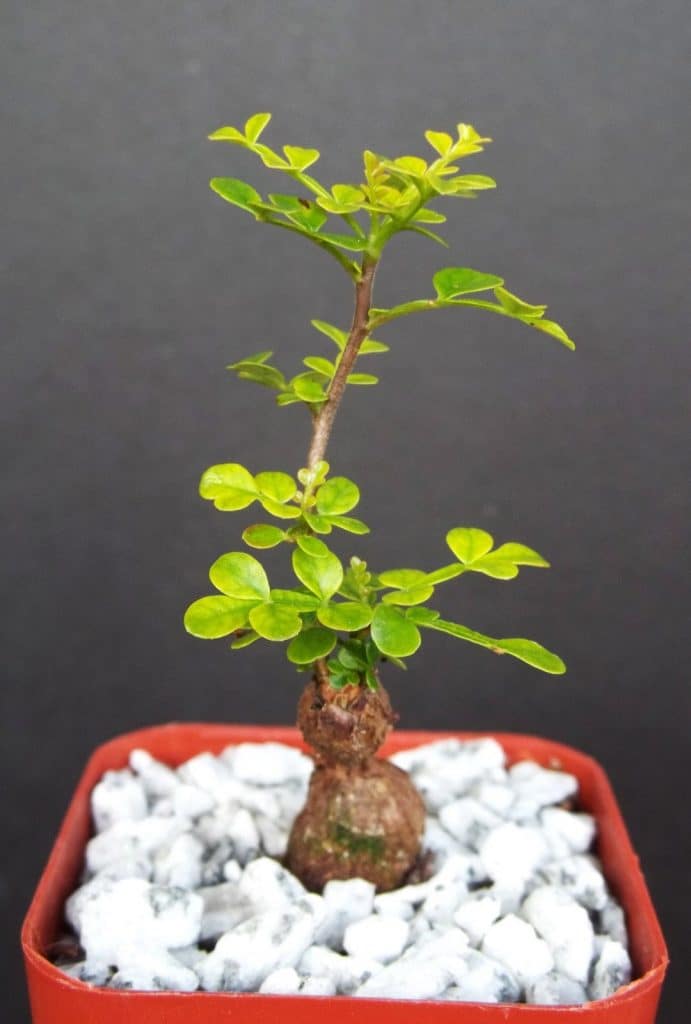
It will no doubt be exciting to see your seeds germinate and begin to produce leaves. You might be tempted to separate them immediately, especially because they will be growing close together, or even on top of each other. However, you will want to leave the seedlings in the seed tray until they are at least 3”- 6” tall. This will allow them to form enough of a root system to allow them to be transplanted safely.
Once they are large enough, you want to transplant your seedlings into their own pots. The pot doesn’t have to be fancy, because you have a long way to go before this is a bonsai tree worthy of display in a fancy bonsai pot. You also don’t want a traditional shallow bonsai pot (yet) because, in order to allow your seedling to grow rapidly, it needs a deep pot to grow strong roots. You can buy 1-gallon plastic planter pots from the garden section of most home improvements stores for less than $1.00 each.
The best way to transplant them is to dig into the soil a few inches around the seedling and transplant the roots and soil together in a mini root ball. If you need to take the roots out of the soil to separate several seedlings, for example, it will most likely still survive. Just make sure to keep the roots moist and cool and out of direct sunlight. You should always try to keep bare roots out of the soil for as short a time as possible.
How to Take Care of a Bonsai Tree?
Once you have your seedlings in their own containers, you will continue to care for them as their species requires. Some species like more water than others, and some love full sun all day long while others need some afternoon shade. Remember, your seedling is not a bonsai tree yet. You won’t need to worry about styling, wiring, or pruning it for several years. Bonsai is a practice of patience.
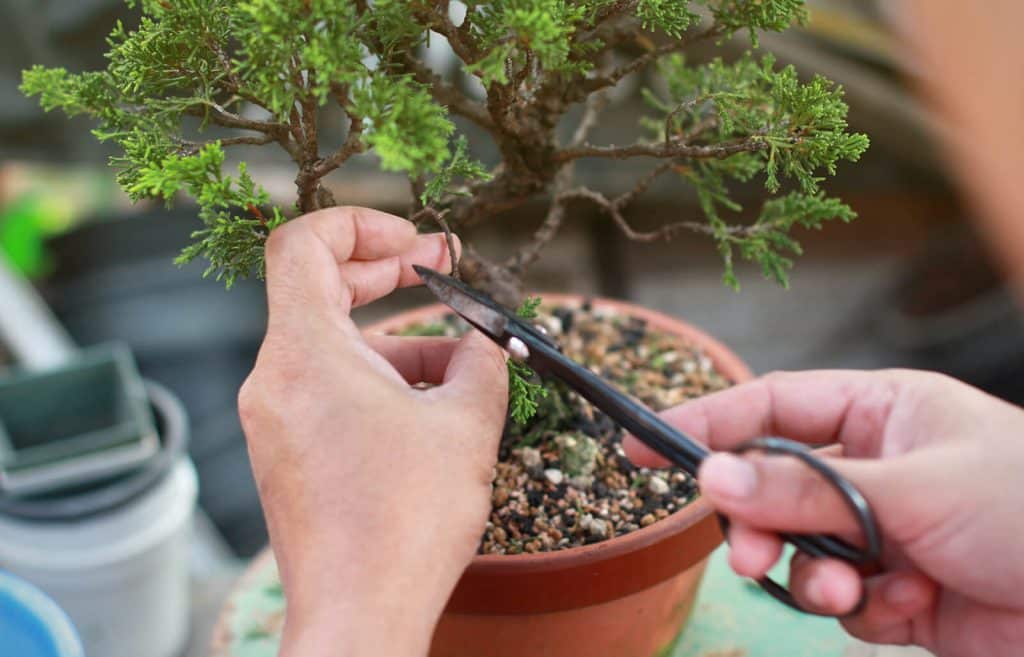
After your seedling has had two or three growing seasons, you can decide on a style for it. You can begin pruning and wiring it to give your bonsai tree the shape and style you desire.
How long do bonsai trees live?
Some bonsai trees can live hundreds of years, so starting grow a bonsai tree from seed is a lifetime commitment.
“How do I Thicken a Bonsai Tree Trunk?”
One of the most frequent questions from new bonsai enthusiasts is “How do I thicken the bonsai tree trunk?” Often, if you are growing a ficus or other tropical trees indoors, they tend to grow tall and skinny. “Leggy” is a term that’s used. There are several remedies for this. The best answer is to allow your tree to grow outdoors during the growing season, as long as the overnight low temperature stays above 40 degrees Fahrenheit. As your tree grows, you also need to repot it into successively larger pots, to allow the roots to expand. This will help thicken the trunk.
Bonsai Tree Growing – Conclusion
Growing bonsai trees from seed can be a rewarding way to indulge your green thumb. It is, however, an extremely long-term project, and the process cannot be rushed. Before you begin, it’s always best to read up on the process. There is nearly unlimited information about the proper growing conditions for each species of the bonsai tree to be found online. Educate yourself before starting and you can expect to enjoy your trees for many, many years.
For learning about the art of bonsai, YouTube is my go-to source. There are many good bonsai channels, but my favorites are The Bonsai Zone with Nigel Saunders and Herons Bonsai with Peter Chen. They are both excellent at describing the how and why of what they are doing with their bonsai trees.
